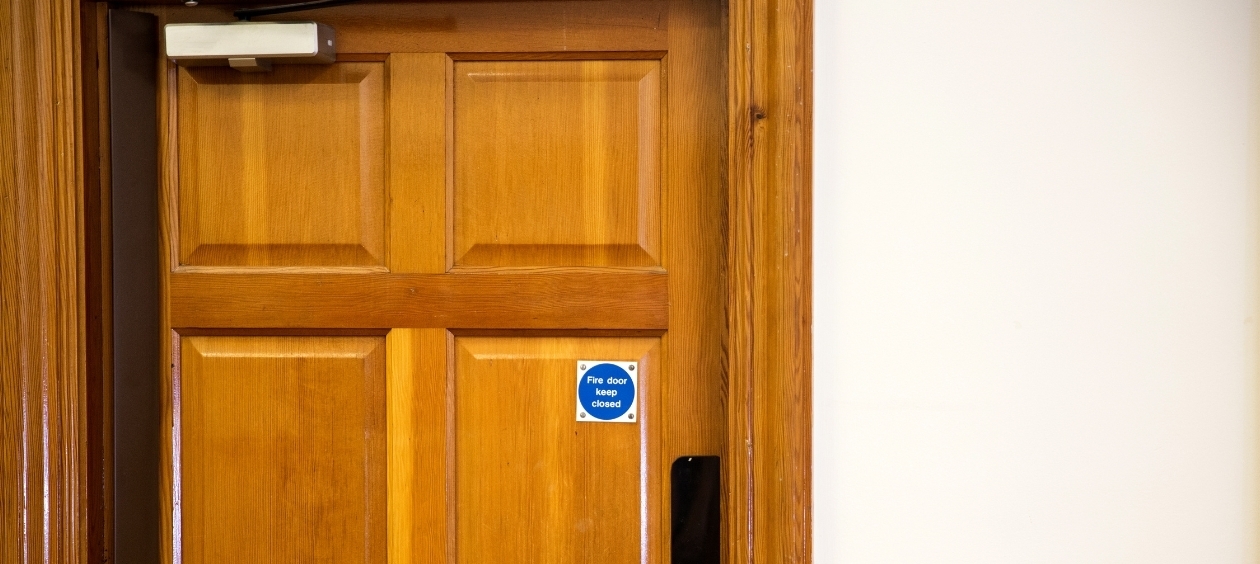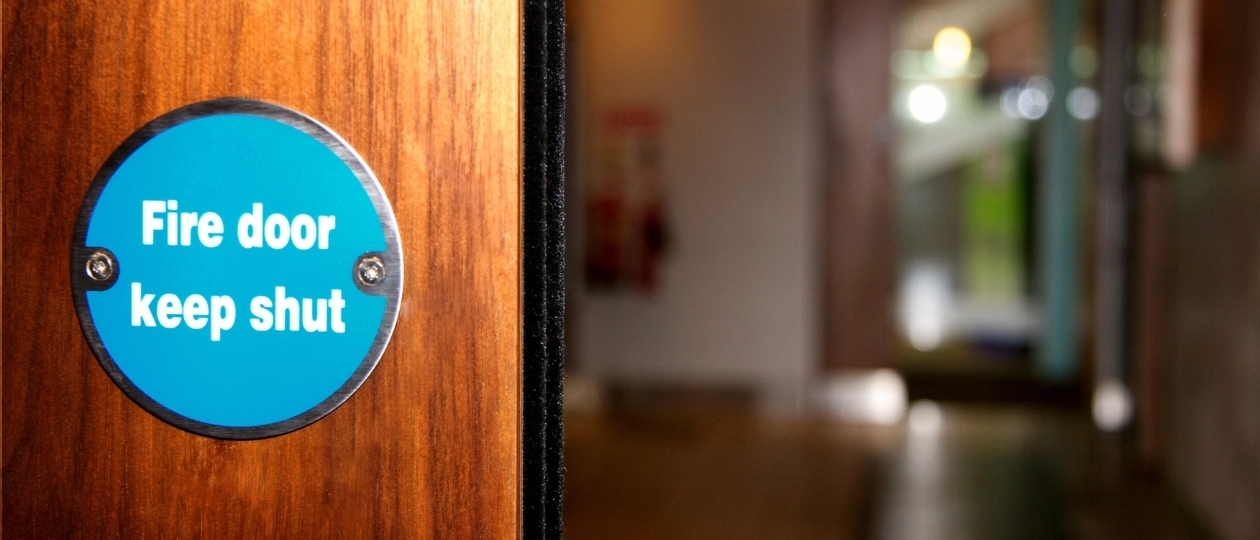How do Fire Doors Work & Why are They Important?
Posted on 4th July 2023
Have you ever wondered how fire doors work? Here is our useful guide to fire doors, their importance and the different fire ratings.
Why are Fire Doors Important?
Why do we have fire doors? The answer is actually quite simple – to prevent fire from spreading throughout your building and allow all occupants time to evacuate safely.
Fire doors have a vital role in fire compartmentation and passive fire protection as they are the main barrier to slow fire down.
How do Fire Doors Work?
Let’s have a look at the function of fire doors. Fire doors work by stopping fire and smoke from passing between compartments by sealing it in one room.
They are made using fire resistant materials that have undergone rigorous testing. While a fire door won’t have an impact on putting out a fire, it will contain it for a certain amount of time.
This will allow occupants of your building enough time to safely evacuate by keeping escape routes clear.
Here are the main components of a fire door and their function:
Intumescent Strip - Intumescent strips are installed along the top and two sides of the door. In the event of a fire the strips expand and create a seal in the gap between the door and the frame.
Smoke Seal - Depending on their function fire doors will also feature a smoke seal which is either a brush or fin that stops smoke from passing through the door. Some fire doors may also have a drop down seal which automatically drops when the latch is closed.
Door Closer - Since a fire door will only be effective if it’s shut, each one must be fitted with a door closer which ensures it closes automatically after being open.
Fire Door Hinges - All fire doors have to be installed with fire rated hinges. Designed to carry the weight of the door, these hinges can withstand the heat and pressure of a fire.

How Long do Fire Doors Work For?
Fire doors have different ratings depending on how long they can withstand fire. The most commonly used fire rated doors are:
FD30 - 30 minutes
FD60 - 60 minutes
FD90 - 90 minutes
FD120 - 120 minutes
The main difference between the various grades is the core thickness. This is the material at the core of the door.
FD30 and FD60 fire doors are required in offices and residential buildings, where fire stopping between floors is needed. A rating higher than FD60 is only needed for core infrastructure or high-risk areas in a property, for example server rooms.
Fire Doors Installation and Inspection with GRJ
Fire doors are a legal requirement in residential buildings over two storeys in height. Each door leading from a habitable room to a stairwell must be a fire door.
For commercial and industrial buildings, the requirements vary depending on whether the escape routes go through a staircase or corridors.
If your building needs fire door inspection, installation or repair work done in line with the latest regulations, please get in touch with the GRJ team.
As leading passive fire protection contractors, we can make sure your building is fully compliant with the relevant standards.
REQUEST A QUOTE
For more information about our services, please fill in the form below and a member of our team will be in touch.
Share this post:
















